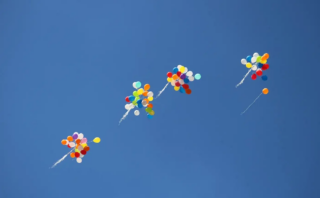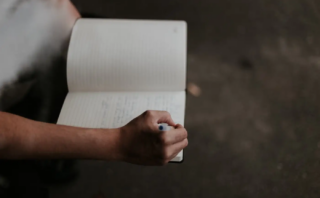For the past 4 days, I booked myself into a mini self-writing retreat at Madingley Hall, a beautiful country estate near Cambridge, UK. As ambitious as I am, I had planned to complete at least 4000 words to finally catch up with my project.
I failed on day one!
Instead of writing, I needed sleep. And space. And time to think and read. With family and my day job, I don’t get much of these at home. Does this resonate?
Luckily, I didn’t step into the trap of self-blame. Instead of beating myself up, I switched gears. And I realised I can still make my retreat a success if I allow myself to work gently and find my writing flow.
In fact, taking breaks is an important part of finding that deep work zone that all writers crave. And research shows that you can consciously create more flow when you apply the Flow Cycle.
The Flow Cycle is a research-based model that explains how writing flow is created in 4 stages.
When you use the Flow Cycle, you will…
- make space for reading and thinking without guilt
- write faster during shorter sprints
- feel rested and balanced and work more productively in the long run
Sneak peek: two of the stages are rest! Here’s how it works.
Four stages for flow that shouldn’t be skipped

Flow does not come out of the blue. And it can’t be forced. Instead, it follows a cyclic rhythm that needs all four components.
Stage 1: Struggle
You learn something new. You load the brain with information. This could be, for example, reading, doing deep research, learning a new technique or writing tool.
This stage is hard work and the brain is taking up lots of energy because it absorbs new input and tries to make sense of it.
Stage 2: Release
During this stage, you take your mind off the problem and disengage to digest what you’ve learned. Your brain will solve the problem in the background, connecting the dots for you.
During this stage, you ideally engage in less demanding activities: emails, arts and craft, taking a walk, play an instrument, take a shower, meditate, etc.
If you’ve ever been trying to figure out a problem for hours and realised that you’re not capable of any more thinking, that means you overtaxed yourself and urgently need to switch into this release stage.
Stage 3: Flow
Your brain takes the newly digested insights and downloads it on the page — you’re writing in flow!
You don’t even have to think as much during this stage, because that was done in stage 1 and 2.
But even this blissful state must come to an end (I sugggest a timer of 90 minutes, and no more than 2x90min in a row, with a short break).
Because your brain takes up a lot of energy during this flow stage, and your body is not moving, so you will inevitably wear yourself out if you don’t force yourself to stop.
Stage 4: Recover
I’ll repeat this because you won’t want to hear this. You can’t stay in flow forever — you need to recover to recharge your batteries. This stage is the most ignored and the most crucial one!
For example, allow yourself healthy nutrition, sunlight, sleep, movement, meditation, stretching, massage, hot bath, etc.
If you don’t take your recovery time, you are not ready for another round of the flow cycle and you’re likely to burn out.
Over to you:
Think or journal about these two questions:
- Ask yourself right now, which of the 4 stages are you in with your current project?
- And if you could change anything in your schedule, where would you make more space for reading/learning, digesting, and recovery — so that you create optimal conditions for flow?
What a Flow Cycle day could look like
A flow cycle sequence can look differently, depending on how big or complicated your project is, or simply depending on your life is structured.
Here’s an example of a one-day flow cycle, starting the night before.
- Evening before: Read 3 articles = Struggle Stage.
- Night: Sleep = Release Stage.
- Next Morning: Write what I’ve learned = Flow Stage.
- Lunch: Have a healthy salad and take a 20min walk = Recovery Stage.
- Afternoon: Start a new flow cycle by reading something!
I like this version because I allocate my sleep to the release stage, rather than having to take a break to ‘digest’. It’s a trick that’s been working well for me and my writing coaching clients — and it makes it more likely that you’ll honour the digestion stage.
Over to you:
Write down how you could build these stages into in the next 7 days of your writing schedule. For example, can you designate and time box slots for “struggle”, “release”, “flow”, and “recovery”? How would your calendar look like if you installed this pattern?
How do you know it’s working?
Here are signs that you don’t work in alignment with the flow cycle
- you feel overwhelmed and stressed out about your writing
- you regularly try to force the writing even when you’re tired and get frustrated
- you start thinking you’re not good enough to be a writer and blame yourself for ‘procrastinating’
If you notice any of these signs, consider reframing your negative thinking. Perhaps you’re not procrastinating. Your body might be telling you that you should align yourself with the flow cycle instead.
Here’s how you will feel once you shift yourself to work with the Flow Cycle; signs that show you that you are in alignment:
- you have specific times in your calendar dedicated to the 4 phases
- you feel rested and balanced
- you feel less guilty about taking breaks
- you write more and better during shorter sprints
- you enjoy space for reading and thinking again
Summary of your new Flow Cycle system
Going forward, make sure you keep to these four simple rules to make this new way of creating flow work even better for you:
- Bring your activities in alignment with the cycle. Changing your calendar might take a while, but it’s worth it. Keep trying.
- Time box the four stages in your calendar clearly, but stay flexible when you feel that you’ve over-exhausted yourself. You can always start a new cycle stage if you feel the pull (e.g. learn something new because you feel ready to absorb new information, even if this is planned for 2 hours later).
- Stay aware during the day in which phase you are, and if you’re happy with it. Awareness and intentionality are the best way to direct your writing without self-blame and frustration.
- Don’t skip “release” and “recovery” stages. You will probably feel excited about your new-found flow, and want to extend those ‘flow’ sessions. Many writers are even afraid to stop and take a break when they are in the deep work zone. Trust me, I’ve tried it. You’ll get burned out. Take those breaks, and stay with all the four stages of the cycle.
How will you integrate the Flow Cycle into your life?
Interested in more? Watch my free Flow Cycle training.





